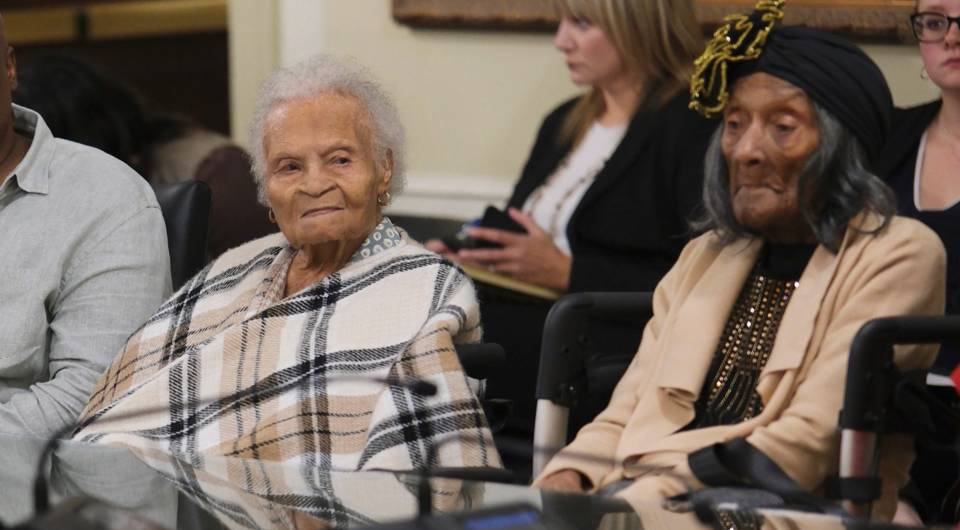
Survivors Viola Fletcher and Lessie Benningfield Randle
Oklahoma City, June 14 (RHC)-- Oklahoma’s Supreme Court has dismissed a lawsuit from the last two survivors of the 1921 Tulsa race massacre.
An estimated 300 Black people were killed when a white mob burned down what was known as “Black Wall Street,” a prosperous African American neighborhood of Greenwood.
Survivors Viola Fletcher and Lessie Benningfield Randle are 110 and 109 years old, respectively. Their lawyers say they will request a rehearing by the Oklahoma Supreme Court and called on the Justice Department to open an investigation into the massacre under the Emmett Till Unsolved Civil Rights Crime Act of 2007.
Before the massacre, Greenwood was a thriving Black district of Tulsa of more than 10,000 Black Americans, one of the most affluent neighborhoods in the country, known as “Black Wall Street”. That changed on 31 May 1921, when Dick Rowland, a Black teenager, was accused of assaulting a white teenage girl.
Tulsa Tribune, a white-owned newspaper, called for white citizens to “Nab Negro for Attacking Girl in Elevator”, and to “lynch a negro tonight”. White police officers encouraged a growing white mob to “go home, get a gun and get a [n-word]”.
The response was swift. White pilots flew over Greenwood, dropping dynamite into the streets, which was considered to be one of the first aerial bombardments of a US city.
“The destruction inflicted upon the Greenwood community by the mob was staggering, including the killing of between 100 and 300 people, predominantly African Americans, and the destruction of more than 1,200 homes, schools, churches and businesses,” the supreme court’s decision acknowledged.
“Even after the initial violence subsided, local officials engaged in actions that exacerbated the harm. State and local officials participated in the mass arrests and detention of Greenwood residents, and black detainees could only be released upon the application of a white person. When Greenwood residents attempted to rebuild their community, they were met with frustration. In one notable example, local officials ‘attempted to block the rebuilding of the Greenwood community by amending the Tulsa building code to require the use of fire-proof material in rebuilding the area thereby making the costs prohibitively expensive’.”
On the 100th anniversary of the massacre, Fletcher recalled the violence: “People being killed. Crawling and seeing smoke. Seeing airplanes flying, and a messenger going through the neighborhood telling all the Black people to leave town.”
“Today’s holding is consistent with our recent public nuisance jurisprudence: expanding public nuisance liability to include lingering social inequities from historical tragedies and injustices runs the risk of creating a new ‘unlimited and unprincipled’ form of liability wherein both State and non-State actors could be held liable for their predecessors’ wrongdoing, in which current actors played no part,” the court wrote. “To hold otherwise would place Oklahoma courts in the unorthodox position of fashioning remedies for these claims or venturing into the realm of outright policymaking – both of which we decline to do.”

